Complete Solutions to F.Isomerism in Coordination Compounds of chapter COORDINATION COMPOUNDS of Class 12 book with complete answers and questions
| Class 12 | CHEMISTRY |
| Chapter | COORDINATION COMPOUNDS |
| GRB PUBLICATION - KOTA QUESTION BANK | F.Isomerism in Coordination Compounds |
| Number Of Questions | 100 |
| Academic Year | 2023-24 |
The complexes `[Pt(NH_(3))_(4)][PtCl_(6)] and [Pt(NH_(3))_(4)Cl_(2)][PtCl_(4)]` are :
View Solution`[Co(NH_(3))_(5)NO_(2)]Cl_(2) and [Co(NH_(3))_(5)ONO]Cl_(2)` are related to each other as :
View SolutionThe number of geometrical isomers of `[Co(NH_(3))_(3)(NO_(3))_(3)]` is
View SolutionGeometrical isomerism is found in coordination compounds having coordination number:
View SolutionCis-trans isomerism is found in square planar complexes of molecular formula: (a and b are monodentate ligands)
View SolutionIn the reaction
`[CoCI_(2)(NH_(3))_(4)]^(o+)rarr^(cl)[CoCI_(3)(NH_(3))_(3)]+NH_(3)`, only one
isomer of the complex product is obtained. Is the initial complex cis or trans ? .
View SolutionGeometrical isomerism in coordination compounds is exhibited by :
View SolutionWhich of the following is not optically active?
View SolutionGeometrical isomerism can be shown by :
View SolutionFor the square planar complex `[Pt(NH_(3))_(NH_(2)OH)(py)(No_(2))]^(o+)` how many geometrical isomers are possible .
View SolutionWhich of the following would exhibit geometrical as well as optical isomerism ?
View SolutionThe number of geometrical isomers and optical isomers of `[Pt(NH_(3))(Br)(Cl)(Py)]` are respectively.
View SolutionThe complex entity which shows geometrical as well as optical isomerism, is :
View SolutionWhich of the following complex compound exhibits geometrical isomerism ?
View SolutionWhich of the following will exhibit more than ten isomers ?
View SolutionHow many total possible isomers are present for `[Pt(CN)_(2)(NO_(2))_(2)]^(2-)` ?
View SolutionCoordination number, oxidation state and number of isomers in `K_(3)[Cr(C_(2)O_(4))_(3)]` are respectively :
View SolutionThe total number of optically active isomers of `[Pt(en)_(2)Cl_(2)]^(2+)` is :
View SolutionSelect the correct statement regarding the complex given below :
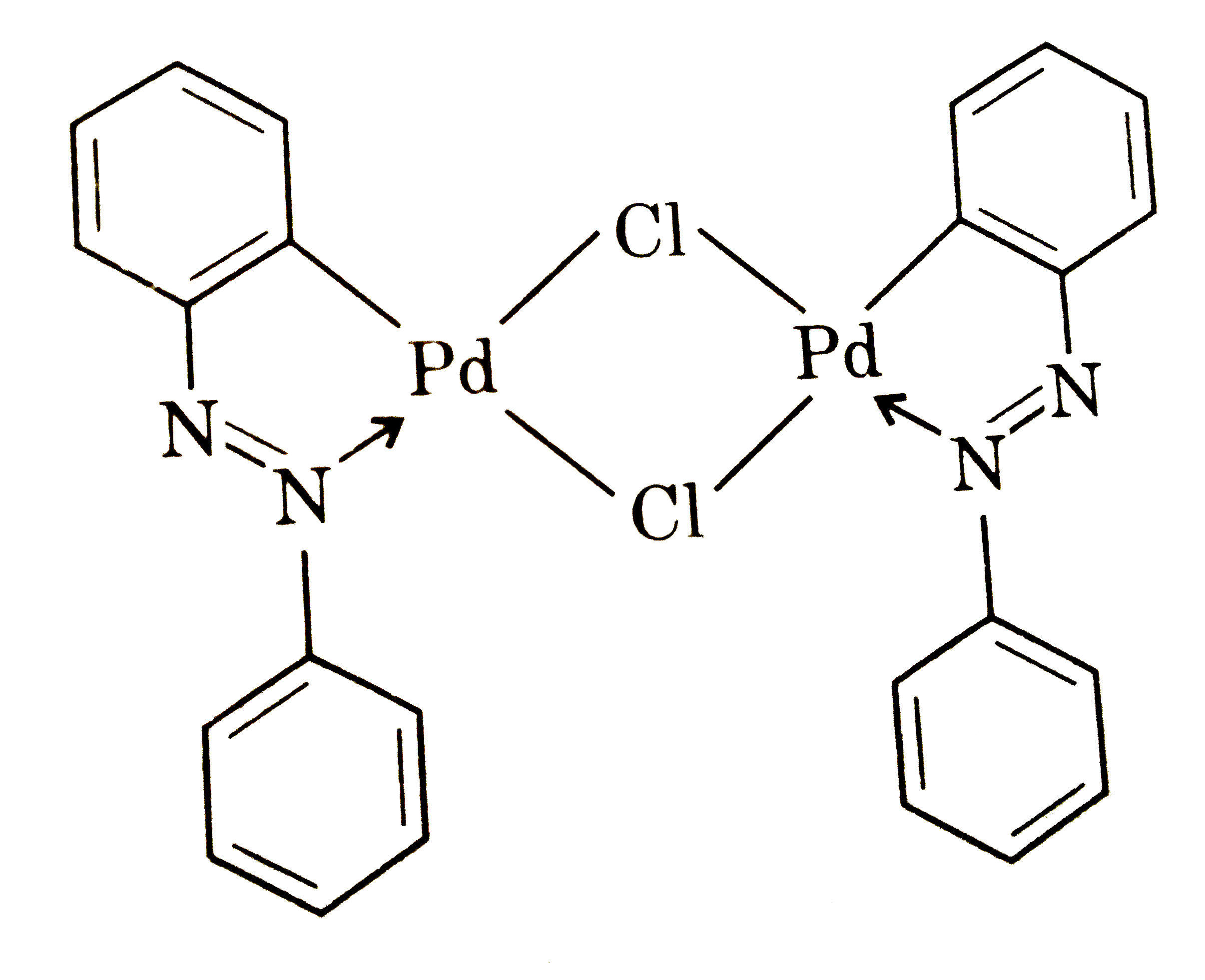
View SolutionWhich of the following complex does not show geometrical isomerism ?
View SolutionWhich of the following is correct IUPAC name of any compound.
View SolutionWhich of the following ions are optically active ?
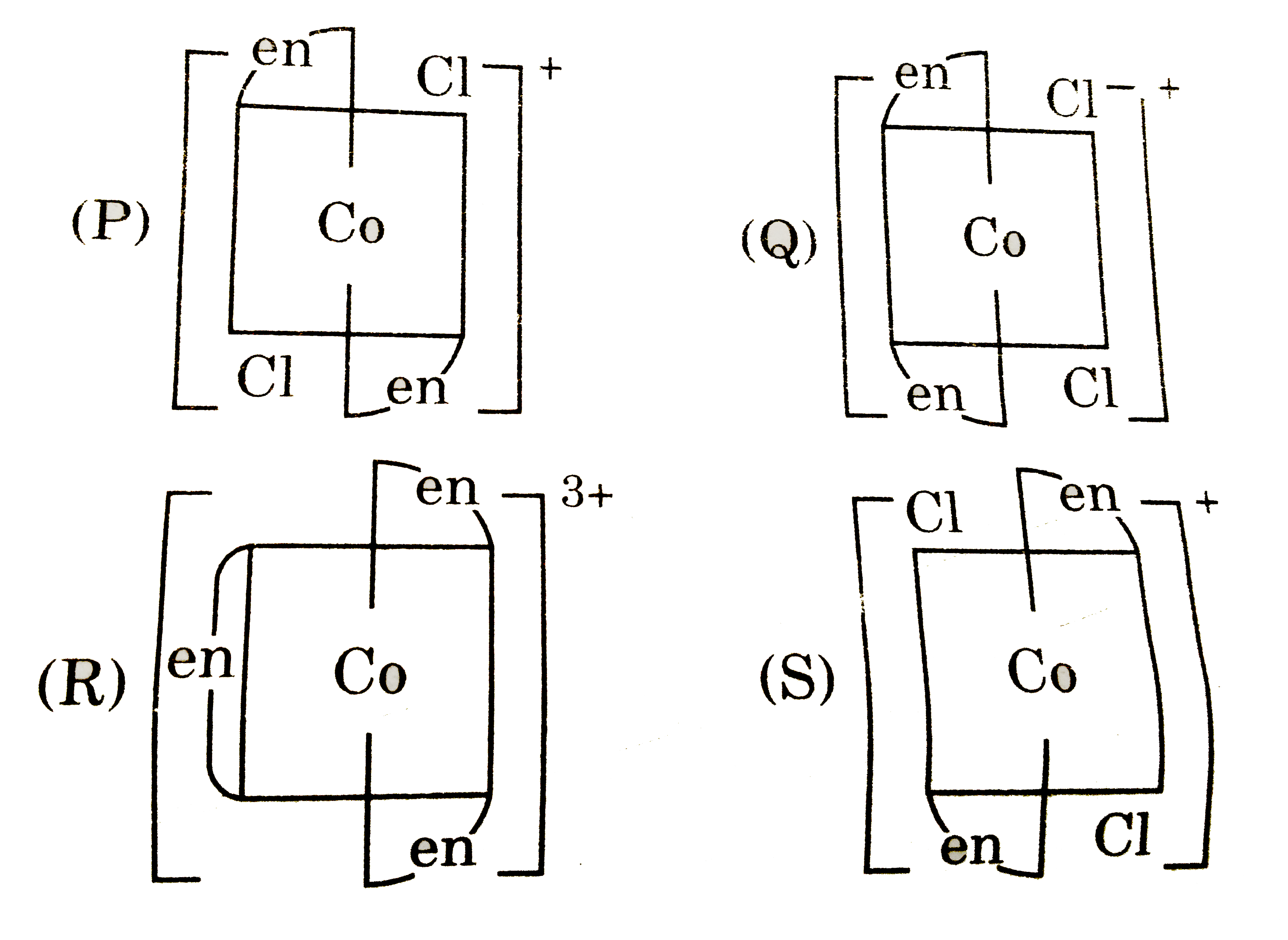
View SolutionIn which case racemic mixture is obtained on mixing its mirror images in `1:1` molar ratio ?
View SolutionIsoomerisms exhibited by `[Cr(NH_(3))_(2)(H_(2)O)_(2)Cl_(2)]^(+)` are
View SolutionWhich of the following complexes exhibit chirality ?
View SolutionWhich of the following polymerisation isomers of the compound having empirical formula `[Cr(NH_(3))_(3)(NO_(2))_(3)]^(+)` has the lowest molecular mass ?
View SolutionHow many isomers are possible for the complex ion `[Cr(NH_(3))(OH)_(2)CI_(3)]^(2-)` ?
View SolutionOn treatment of `[Pt(NH_(3))_(4)]^(2+)` with concentrated HCI, two compounds (P) and (Q) having the same formula, `[Pt(NH_(3))_(2)CL_(2)]` are obtained, (P) can be converted into (Q) by boiling with dilute HCI. A soution of (P) reacts with oxalic acid to form `[Pt(NH_(3))_(2)(C_(2)O_(4))]` whereas (Q) does not react. Point out the correct statement of the following :
View SolutionWhich of the following complexes shows ionization isomerism ?
View SolutionWhich of the following will show optical isomeris ?
View SolutionWhich kind of isomerism is shown by the complex `[Co(NH_(3))_(5)(ONO)]SO_(4)` ?
1. Ionisation isomerism 2.Linkage isomerism
3. Geometrical isomerism 4. Optical isomerism.
View SolutionWhich of the following complexes show geometrical as well as optical isomerism ?
`(P) [Cr("ox")_(3)]^(3-)`
`(Q) [Rh(en)_(2)Cl_(2)]^(+)`
`(R ) [Co(NH_(3))_(2)(Cl)_(2)(en)]^(+)`
Select the correct answer using the codes given below :
View SolutionThe complexes given below show :
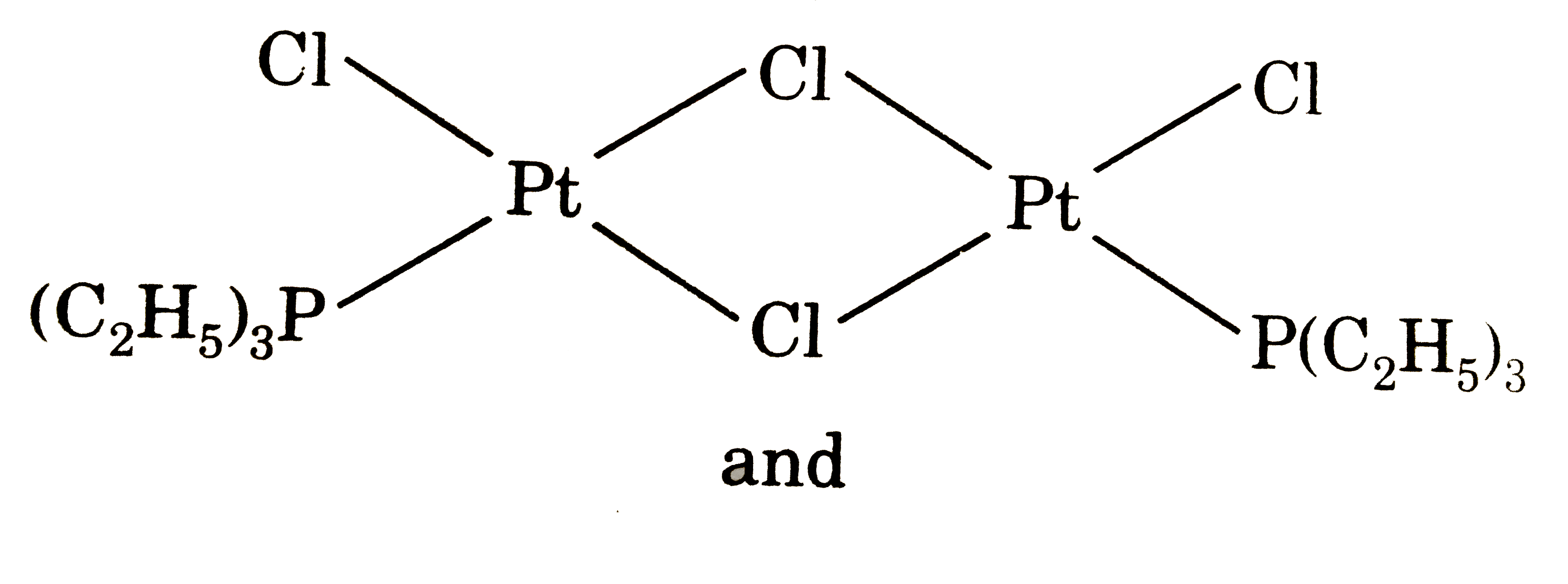 " and "
" and " 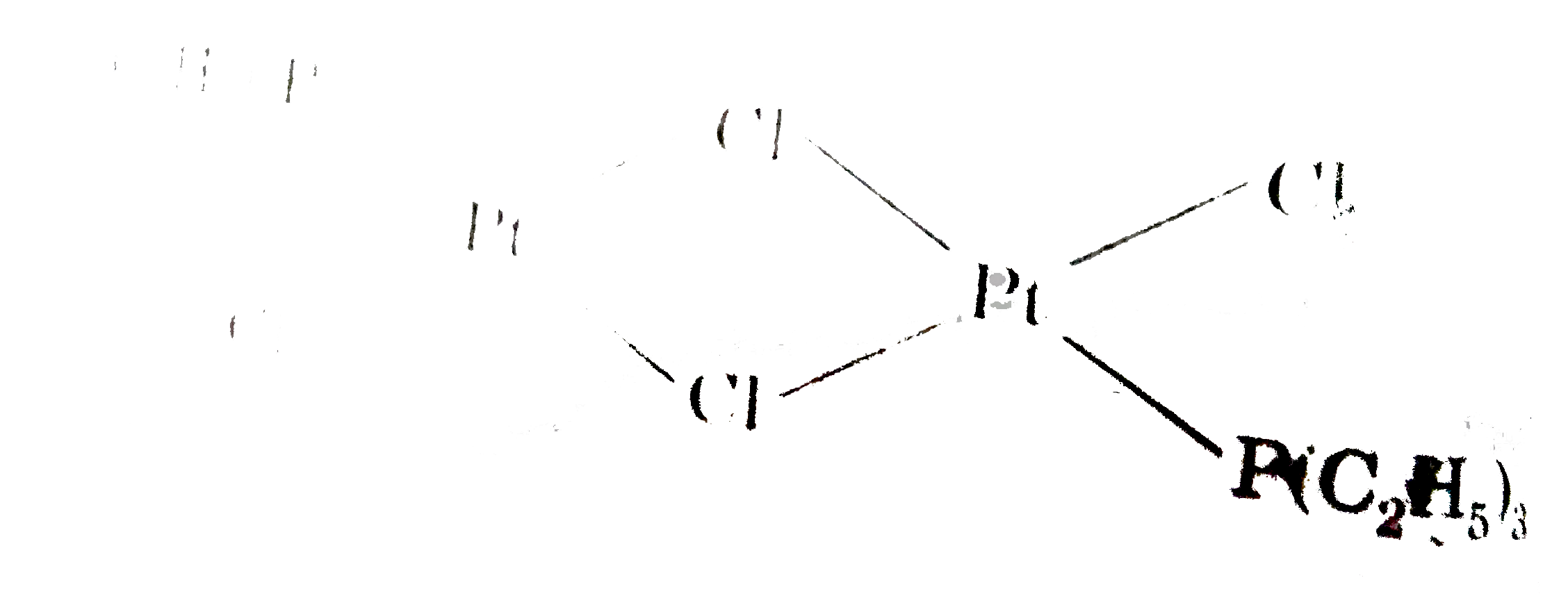
View SolutionGive the total number of possible structural isomers of the compound `[Cu(NH_(3))_(4)][PtCl_(4)]` .
View SolutionIUPAC name of given complex is :
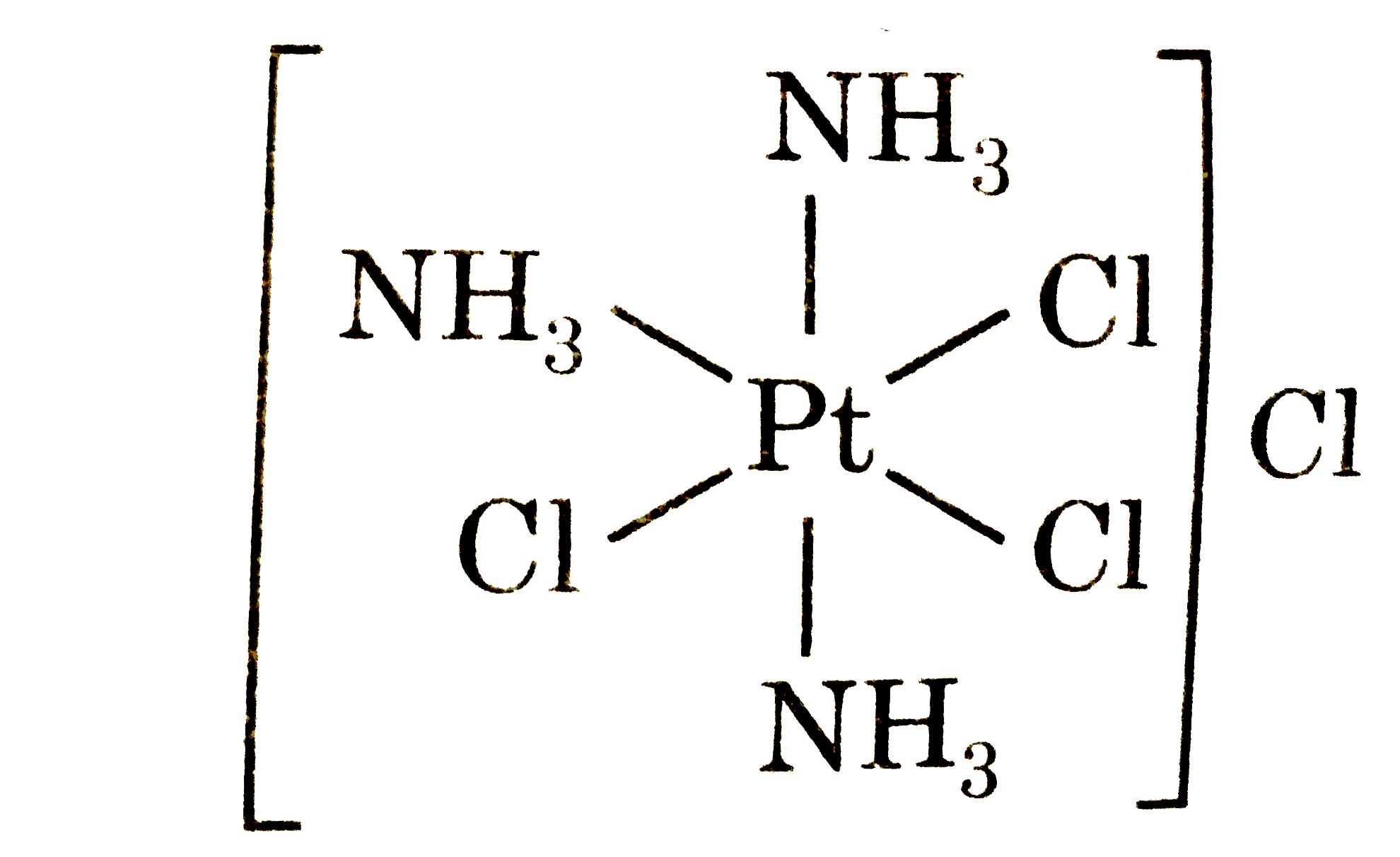
View SolutionWhich one of the following is an example of coordination isomerism?
View SolutionSelect the correct code about complex `[Cr(NO_(2))(NH_(3))_(5)][ZnCl_(4)] :`
`(I)` IUPAC name of compoun is pentaamminenitrito`-N-`chromium `(III)` tetrachlorozincate `(II)`
`(II)` It shows geometrical isomerism
`(III)` It shows linkage isomerism
`(IV)` It shows coordination isomerism`
View SolutionWhich of the following statement is correct ?
View Solution`[Co(en)_3]^(3+)` ion is expected to show
View SolutionWhich of the following complex will show optical activity ?
View SolutionThe complex ion . `[M(en)Br_(2)I_(2)]^(-1)`, has two optical isomers. Their correct configurations are:
View SolutionConsider the following statements and select the correct option using the codes given.
`(i) [Cr(NH_(3))_(6)][Cr(NH)_(6)]` and `[Cr(NH_(3))_(4)(CN)_(2)][Cr(NH_(3))_(2)(CN)_(4)]` are coordination isomers.
`(ii)[Cr(py)_(2)(H_(2)O)_(2)Cl_(2)]Cl` and `[Cr(py)_(2)(H_(2)O)Cl_(3)]H_(2)O` are ligand isomers.
`(iii)[Pt(NH_(3))_(4)Br_(2)]Cl_(2)` and `[Pt(NH_(3))_(4)Cl]Br_(2)` are linkage isomers.
`(iv)[NiCl_(2)(PPh_(3))_(2)(` tetrahedral`)` exhibitsgeometrical isomerism.
View SolutionWhich of the following has an optical isomer?
View SolutionWhich of the following pairs of structure shows geometrical isomerism ?
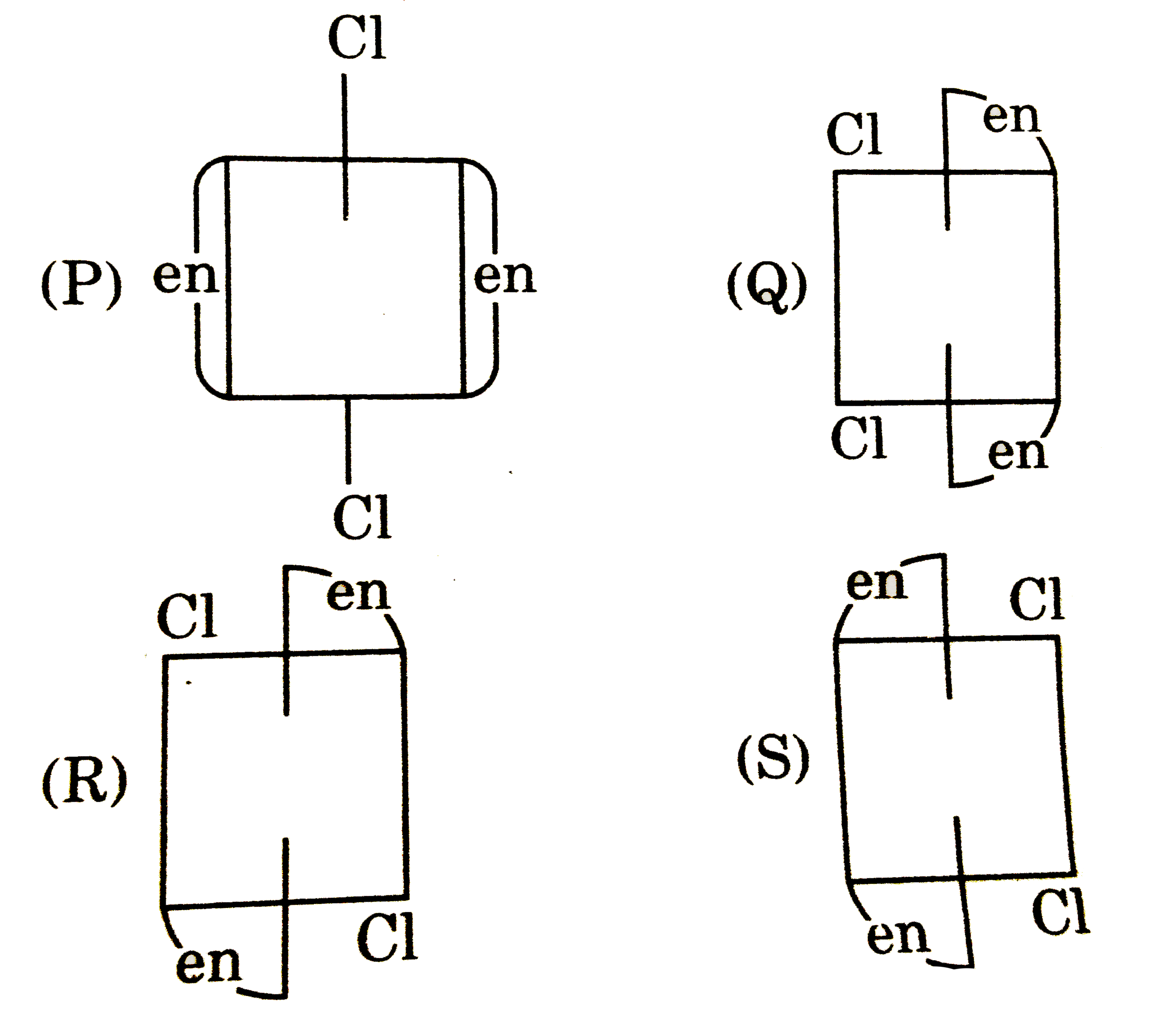
View SolutionWhich of the following pairs represents linkage isomers?
View SolutionSelect the correct statement regarding `[Pt(CH_(3)-CH(NH_(2))COO)Cl_(2)]^(-)`
View SolutionThe diamagnetic complex which has two geometrical and 4 optically active isomers is :
View SolutionThe compexes `[Co(NH_(3))_(6)][Cr(C_(2)O_(4))_(3)]` and `[Cr(NH_(3))_(6)][Co(C_(2)O_(4))_(3)]`
View SolutionWhich of the following compounds show optical isomerism?
I. `cis -[Co(NH_(3))_(4) Cl_(2)]^(+) `
II. Trans - `[Co(en)_(2) Cl_(2)]^(+)`
III. Cis - `[Co(en)_(2) cl_(2)]^(+)`
IV. `[Co(en)_(3)]^(3+)`
Choose the correct answer form the codes given below.
View SolutionWhich one has largest number of isomers ?
View SolutionWhich of the following statement is incorrect ?
View SolutionWhich of the following statements is not true about the complex ion `[Pt(en)_2Cl_2]^(2+)`?
View SolutionOf the following complex ions, one exhibits isomerism. That is :
View SolutionWhich of the following will be able to show geometrical isomerism ?
View SolutionThe number of geometrical isomers for octahedral `[Co(NH_(3))_(2)Cl_(4)]^(-)` and square planar `[AuCl_(2)Br_(2)]^(-)` respectively are :
View SolutionSelect the correct statement from the following :
View SolutionWhich of the following isomers of `[M(NH_(3))_(2)Cl_(2)]` would react with silver oxalate `(Ag_(2)C_(2)O_(4))` ?
View SolutionWhich of the following is correct regarding `[Pt(NH_(3))_(2)(CN)_(2)]` ?
View SolutionThe complex which exhibits geometrical as well as optical isomerism is :
View SolutionHow many isomers possible for `[Co(gly)(dmg)(en)]^(+1)`?
View SolutionWhich of the following does not show fac-mer isomerism ?
View SolutionWhich of the following statements are true ?
View SolutionHow many geometrical isomers and stereoisomers are possible for `[Pt(NO_(2))(NH_(3))(NH_(2)OH)(Py)]^(+)` and `[Pt(BRr)(Cl)(I)(NO_(2))(Py)]` respectively ?
View SolutionThe two compounds pentaamminesulphatocobalt `(III)`bromide and pentaamminesulphatocobalt `(III)` chloride represent `:`
View SolutionHow many total possible isomers are present in the following complex ?
`[Co(gly)NH_(3)H_(2)O(CN)(NO_(2))]`
View SolutionWhich of the following will exhibit geometrical as well as optical isomerism ?
View SolutionHow many total possible isomers are present in the following complex ?
`[Co(en)NH_(3)(H_(2)O)(Cl)(NO_(2))]`
View SolutionTotal possible linkage isomers of `K_(4)[Fe(CN)_(5)(NO_(2))]` is :
View SolutionHow many geometrical isomers are possible for `[Pd^(2+)(NH_(2)-CH(CH_(3))-CO_(2)^(-))_(2)]^(0)`
View Solution`[Cr(NH_(3))_(5)Br]Cl` and `[Cr(NH_(3))_(5)Cl]Br` can be distinguished by/and isomerism shown is:
View SolutionWhich kind of isomerism is exhibited by `[Co(EDTA)]`-
View SolutionWhich one of the following statements are correct for the complex `[Co(NH_(3))_(4)(Cl)(NO_(2))]Cl`?
(P) Cobalt is in `+III` oxidation state involving `d^(2)sp^(3)` hybridization.
(Q) Cobalt is in `+III` oxidation state involving `sp^(3)d^(2)` hybridization.
(R ) It shows ionisation as well as linkage isomerism.
(S) It also shows geometrical isomerism.
View SolutionWhich of the following statements are true ?
View SolutionIf a complex, `Ma_(4)b_(2)` (where M is a central atom and a and b are mondentate ligands ) has trigonal prismatic geometry, the total number of possible geometrical isomers would be :
View SolutionWhich of the following complexes would exhibit only geometrical isomerism ?
View SolutionThe total possible number of optically inactive isomers of the complex `[Pt(NH_(3))_(2)FClBrI]` would be :
View SolutionWhich kind of isomerism is exhibited by octahedral `[Co(NH_(3))_(4)Br_(2)]CI` ? .
View Solution`[Co(NH_(3))_(4)(SCN)_(2)]^(+)" and "[Co(NH_(3))_(4)(NCS)_(2)]^(+)` are :
View SolutionWhich of the following isomerism is exhibited by the complexes, `[Co(gly)_(3)]` ?
View SolutionSelect the correct statement :
View SolutionComplex compound [`Cr(NCS)(NH_(3))_(5)][ZnCl_(4)]` will be,
View SolutionWhich of the following is true about the complex `[PtCl_(2)(NH_(3))OH_(2)]` ? [Atomic number of `Pt=78`]
(P) It will have two geometrical isomeric forms, cis and trans
(Q) The hybridisation state of `Pt(II)` is `sp^(2)`
(R ) It is a square planar complex
(S) It is a diamagnetic complex
(T) It can show hydrate isomerism
(U) It is tetrahedral complex
View SolutionWhich of the following complex is optically inactive but its other geometrical isomer is optically active ?
View SolutionWhich of the following complexes are polymerisation isomers ?
View SolutionType of isomerism which may be possible for the six coordinated complex of metal M having formula of `Cr(NO_(2))_(2).6H_(2)O` :
View SolutionWhich of the following pair of complexes are co-ordination isomers ?
View SolutionWhich of the following complex among the given options is not the hydrate isomer of others ?
View SolutionSelect which complex have structural and stereo both type of isomers :
View SolutionWhich of the following complex/ion only show linkage isomerism ?
View SolutionWhich of the following complexes may show atleast three type of isomerism, namely ionisation, hydrate and linkage ?
View SolutionWhat kind of isomerism exists between `[Cr(H_(2)O)_(6)]Cl_(3)` (violet) and `[Cr(H_(2)O)_(5)Cl].H_(2)O` (greyish-green)?
View SolutionSelect the complex which show both structural and stereo isomerism :
View SolutionSelect which is heteroleptic complex and show fac-mer isomerism :
View SolutionWhich of the following complex exists as dextro and laevo form ?
View SolutionWhich complex does not show geometrical isomerism but show optical isomerism ?
View SolutionThe complex `[Pt(py)(H_(2)O)(NH_(3))(NO_(2))ClBr]` has :
View SolutionWhich of the following statement is correct ?
View SolutionTwo molecules having same molecular formula are drawn for your refference
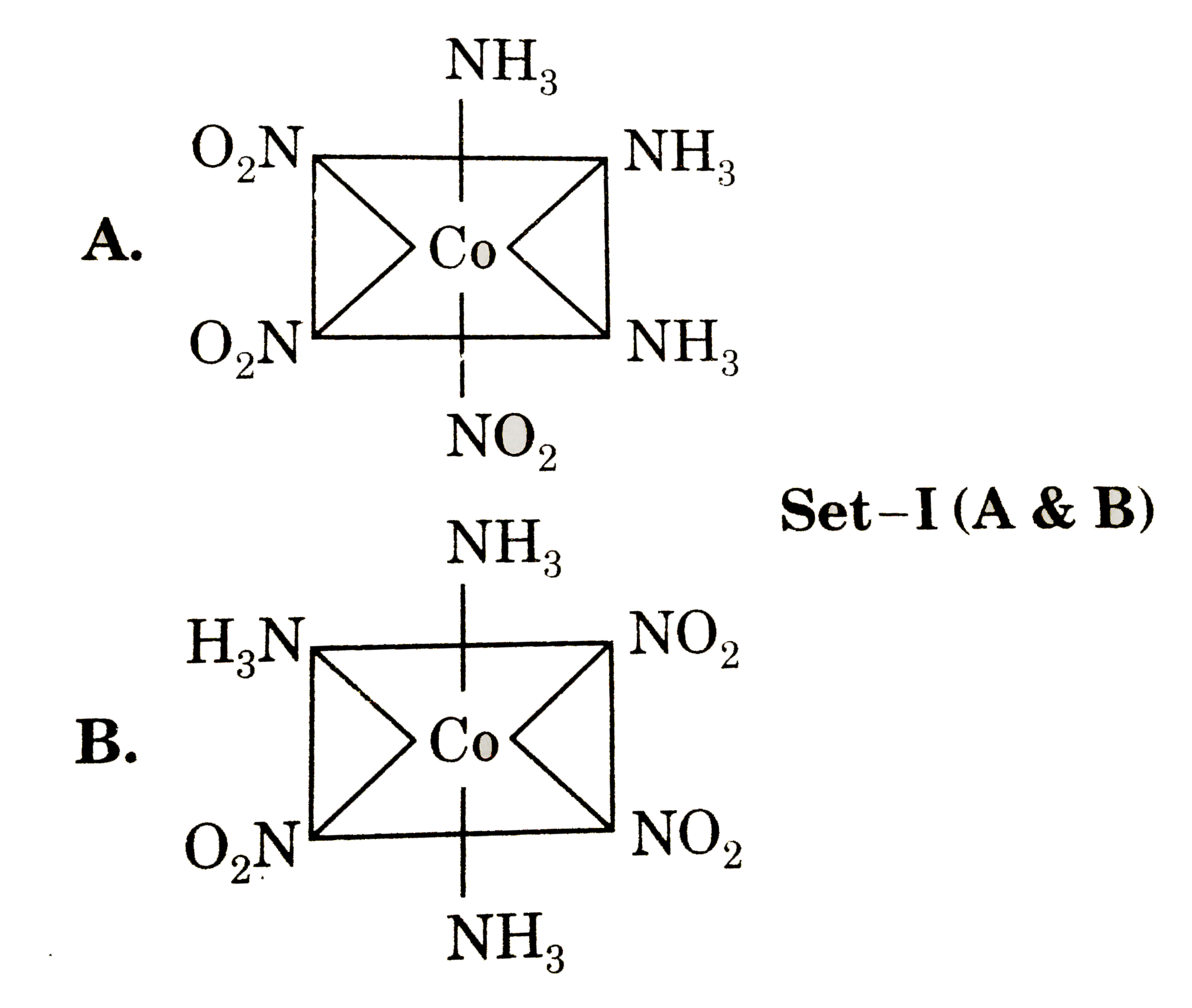

Choose the correct statements :
View SolutionIndicate the complex ion which shows geometrical isomerism :
View SolutionDue to the presence of ambidenate ligands coordination compounds show isomerism. Palladium complexes of the type `[Pd(C_(6)H_(5))_(2)(SCN)_(2)]` & `[Pd(C_(6)H_(5))_(2)(NCS)_(2)]` are
View Solution
F.Isomerism in Coordination Compounds questions and complete solutions for chapter COORDINATION COMPOUNDS of GRB CHEMISTRY (HINGLISH) of Class 12
All Exercises from GRB PUBLICATION - KOTA QUESTION BANK Class 12 CHEMISTRY COORDINATION COMPOUNDS
- B.Nomenclature of Coordination Compounds
- C. Werners Theory, EAN Rule
- COMPREHENSION 1
- COMPREHENSION 10
- COMPREHENSION 11
- COMPREHENSION 12
- COMPREHENSION 13
- COMPREHENSION 14
- COMPREHENSION 15
- COMPREHENSION 16
- COMPREHENSION 17
- COMPREHENSION 18
- COMPREHENSION 19
- COMPREHENSION 2
- COMPREHENSION 20
- COMPREHENSION 21
- COMPREHENSION 22
- COMPREHENSION 23
- COMPREHENSION 24
- COMPREHENSION 25
- COMPREHENSION 26
- COMPREHENSION 27
- COMPREHENSION 28
- COMPREHENSION 29
- COMPREHENSION 3
- COMPREHENSION 30
- COMPREHENSION 31
- COMPREHENSION 32
- COMPREHENSION 33
- COMPREHENSION 34
- COMPREHENSION 35
- COMPREHENSION 36
- COMPREHENSION 37
- COMPREHENSION 38
- COMPREHENSION 39
- COMPREHENSION 4
- COMPREHENSION 40
- COMPREHENSION 41
- COMPREHENSION 42
- COMPREHENSION 5
- COMPREHENSION 6
- COMPREHENSION 7
- COMPREHENSION 8
- COMPREHENSION 9
- D.VBT, CFT, Hybridisation
- E. Stability, Colour and Magnetic Properties of Complexes
- F.Isomerism in Coordination Compounds
- G. Organometallic Compounds, Synergic Bonding
- MATCH THE COLUMN TYPE
- MULTIPLE OBJECTIVE TYPE QUESTION
- REASONING TYPE
- SBJECTIVE TYPE
- STRAIGHT OBJECTIVE TYPE